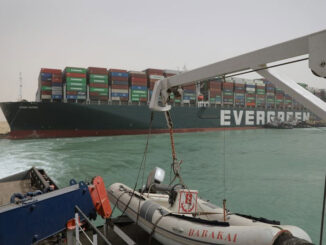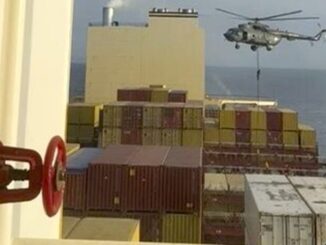
Julien Boulland from Bureau Veritas Marine & Offshore considers why the decarbonisation conversation must expand beyond what happens on ships.
Determining which fuels will power ships in a low-carbon future is just one aspect of reducing greenhouse gas (GHG) emissions in shipping. To succeed, we need to optimise the entire logistics chain of shipping, including the crucial element of ensuring green fuels are available on a large scale.
Breaking silos between maritime and land-based industries will be instrumental to the success of the net zero transition. To address fragmentation in supply chains and legislation, shipping must engage in broader dialogues with new stakeholders including green fuel producers, land-based delivery chains, as well as carbon capture and nuclear energy value chains. Only by building new bridges with those sectors can we develop the standards, infrastructure, and contracts needed to make net-zero shipping a reality.
Scaling up green fuel production
The development of supply chains for renewable and low-carbon fuels is not happening as fast as we need. Despite increasing willingness in the shipping industry to pay a premium for green fuels, the lack of availability of those fuels is frustrating. The challenge lies not only in making these fuels economically viable; but also in securing access to limited sustainable feedstocks, scaling-up production, establishing transport links, and developing bunkering infrastructure.
Moving the needle on green fuel production requires clear signals from the maritime sector to green fuel producers (current and potential), and vice-versa. Only with the certainty of a strong and steady demand in shipping can we unlock the necessary investments to scale up the production of green fuels and expand transport and bunkering infrastructure to make it available for the maritime sector. Conversely, only with greater certainty on green fuel availability will shipowners make investments in vessels powered by those fuels.
But this marks a considerable change in approach for shipowners. Ships are typically ordered on the basis that the fuel used is available worldwide in a global bunker market. That will change – certainly during the transition period as owners begin to secure supplies of green fuels. This challenge also highlights the vital role of approaches such as energy insetting to connect fuel buyers and sellers, while also bridging the cost disparity between conventional and low-carbon fuels.
Leveraging existing solutions
The complexity of developing new supply chains for energy sources should not hinder immediate action, which is essential to keep shipping within its “GHG budget” to 2050. To really address the climate challenge, we need to account for all emissions released into the atmosphere throughout the entire supply chain, including fuel supply, until carbon neutrality is achieved, rather than solely focusing on emissions from the voyage.
A hard truth is that the timelines required to scale up new fuel production capacity will not meet the significant emissions reductions needed this decade, in line with the IMO’s revised strategy, adopted in 2023. Therefore, shipping should use all levers that are already available to reduce its energy needs in the short term, through operational efficiency and clean technology.
As evidenced in Bureau Veritas’ (BV) recent study, which modelled several potential decarbonisation pathways for the maritime industry, embracing measures like reducing speed and waiting times could have a significant cumulative impact. BV’s simulations show that without action to reduce speed or waiting time while ocean transportation volumes grow moderately, GHG emissions would be 92% higher in 2050, with 44% more emissions over the period from a GHG budget perspective, than if these levers had been actioned.
Concerted effort to boost operational and energy efficiency is needed not only to align with the Paris Agreement’s goal of limiting temperature increases to 1.5C, but also to lay the groundwork for the transition to new fuels, ensuring they are used efficiently.
A collaborative transition
The practical realities of the decarbonisation transition call for a fresh approach that covers entire supply chains and fosters greater knowledge-sharing beyond the maritime sector.
BV’s Future Shipping Team (FST) was established precisely for this purpose, bridging expertise from capabilities sectors within the BV Group – with more than 80,000 employees, such as nuclear energy, the CO2 value chain, alternative fuels, and wind-assisted propulsion, to enable the sharing of research and expertise.
With over 250 experts across 12 workstreams, the FST recognises that achieving net-zero shipping ultimately relies on robust communication and collaboration, both within and outside the shipping industry. Only by expanding the conversation can we bring the clarity and practical solutions needed for the crucial technology, fuel, and retrofit decisions ahead.






